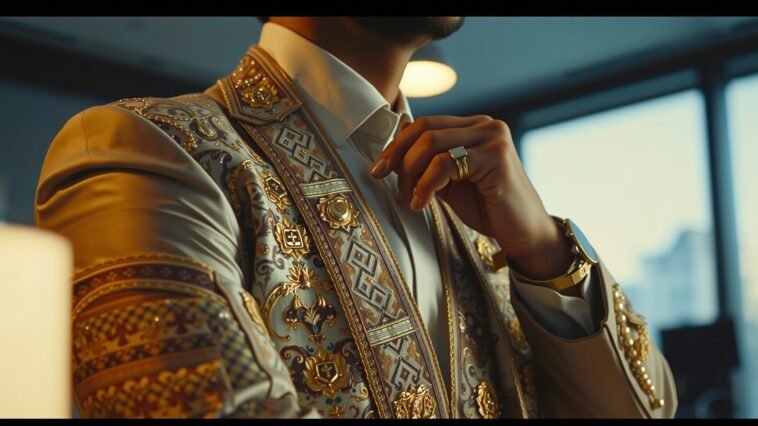Fashion and politics have long been interconnected, with clothing serving as a medium for expression, identity, and protest. This relationship demonstrates how style transcends aesthetics to reflect societal values, power structures, and resistance. Below are ways fashion intersects with politics:
1. Fashion as Political Symbolism
- Uniforms of Power: Military and political uniforms signify authority, discipline, and allegiance. Examples include Mao suits in China symbolizing communist ideology or American presidents’ tailored suits exuding professionalism.
- National Identity: Traditional clothing, like the Indian saree or Scottish kilt, represents cultural heritage and national pride, often politicized during independence movements.
- Protest Attire: T-shirts with slogans, pink “pussy hats” during the Women’s March, or all-black outfits at the Golden Globes’ #MeToo protest highlight political statements through dress.
2. Fashion and Social Movements
- Civil Rights Movement: African Americans in the 1960s used fashion to assert dignity and pride. The adoption of natural hairstyles and dashikis became symbols of Black identity and resistance against assimilation.
- Feminism: Women’s adoption of pantsuits (e.g., Hillary Clinton’s iconic look) challenged gender norms, while the suffragette white dress symbolized the fight for women’s voting rights.
- Environmentalism: The rise of sustainable and ethical fashion addresses climate change and labor rights, with activists like Stella McCartney championing eco-friendly practices.
3. Politicians and Fashion
- Influence Through Style: Politicians use clothing to convey relatability or power. For example:
- Michelle Obama’s fashion choices supported emerging designers and celebrated inclusivity.
- Jacinda Ardern wore a hijab during visits to Christchurch after the mosque attacks, symbolizing solidarity with the Muslim community.
- Narendra Modi’s tailored suits project nationalism and modernity.
- Missteps, such as insensitive choices (e.g., Melania Trump’s “I Really Don’t Care” jacket), can spark backlash and controversy.
4. Fashion as Economic and Political Tool
- Trade Policies: Fashion industries are shaped by trade agreements, tariffs, and labor laws. Outsourcing production to developing countries highlights issues of globalization, exploitation, and labor rights.
- Sanctions and Bans: Countries like North Korea and Iran have imposed restrictions on “Western” clothing as part of cultural control, reflecting political ideologies.
5. Fashion in Protests and Revolutions
- Arab Spring: Protesters used specific colors and scarves to symbolize unity and identity.
- Hong Kong Protests: Masks and black clothing symbolized defiance against surveillance and government oppression.
6. Designers and Activism
Many designers incorporate politics into their work:
- Vivienne Westwood: Her collections often critique capitalism and environmental destruction.
- Christian Dior: The “We Should All Be Feminists” T-shirt aligned with gender equality activism.
- Kerby Jean-Raymond (Pyer Moss): Highlights Black culture and issues of systemic racism.
Challenges in Political Fashion
- Commercialization of Activism: Brands often capitalize on social movements without genuine support (e.g., “rainbow capitalism” during Pride Month).
- Cultural Appropriation: Fashion has faced backlash for exploiting marginalized cultures without acknowledgment or respect.
Fashion remains a powerful tool for individuals and communities to express their identities, challenge power structures, and advocate for change. It reveals how deeply intertwined culture, politics, and personal expression are in shaping societal narratives.





